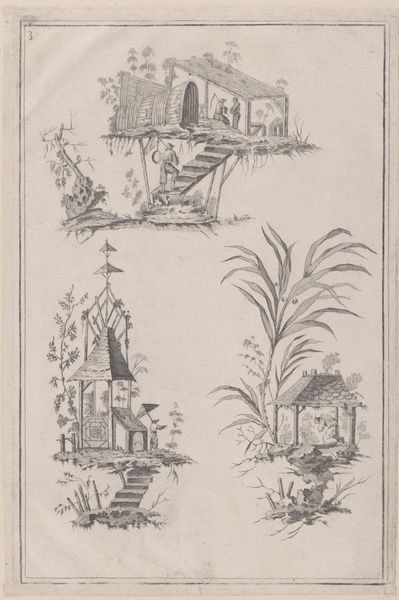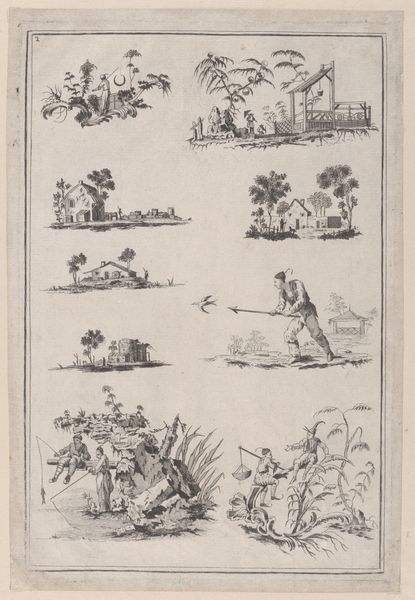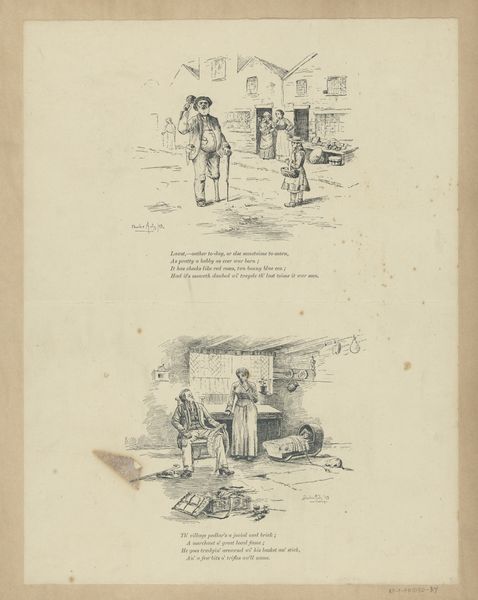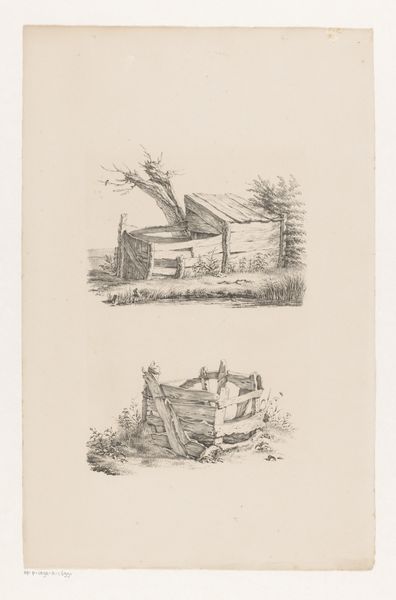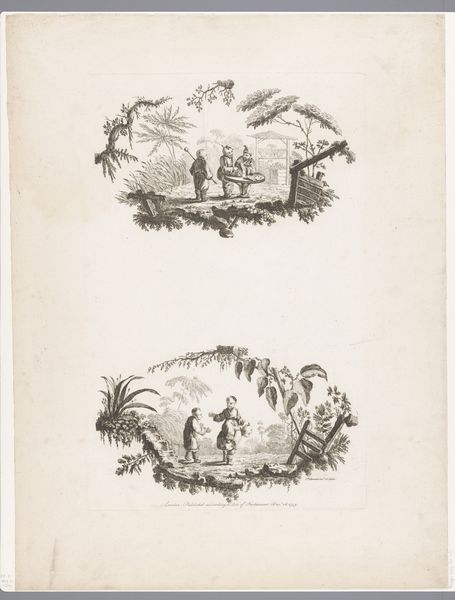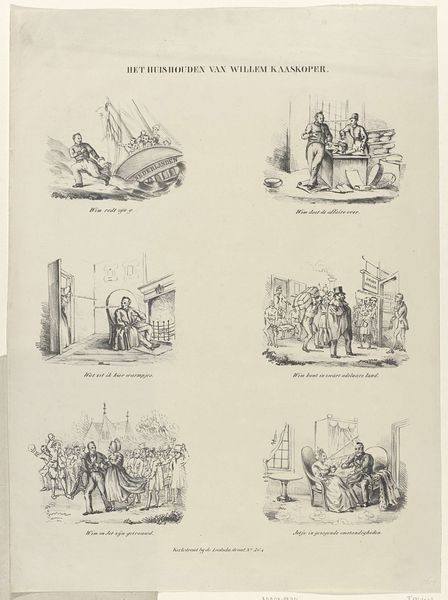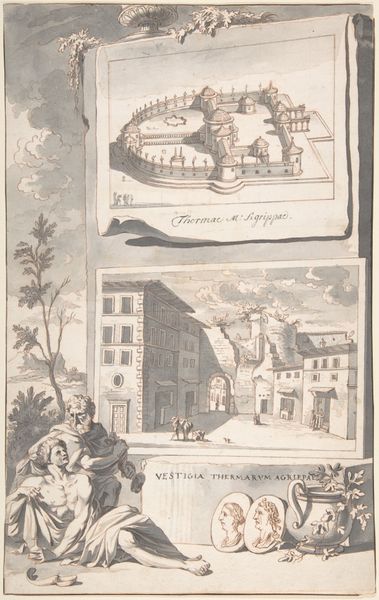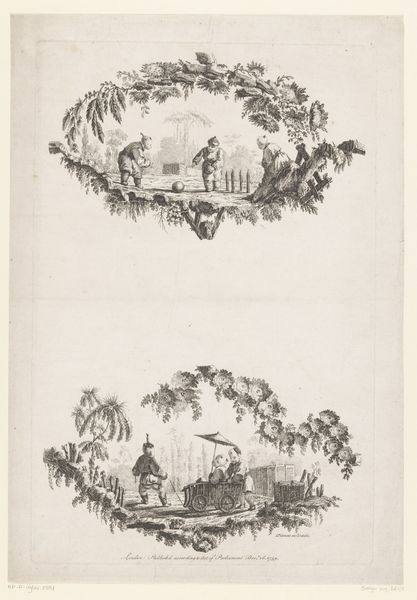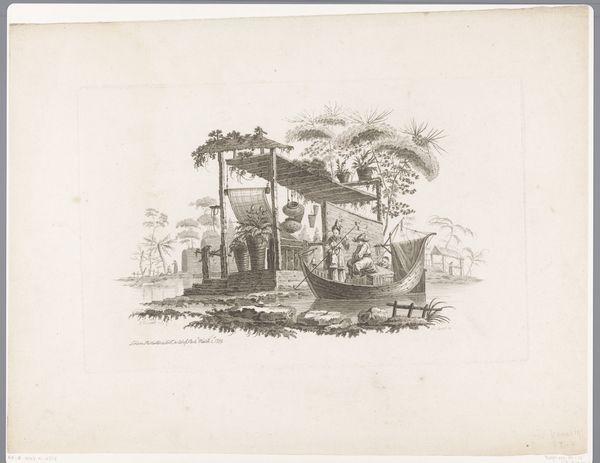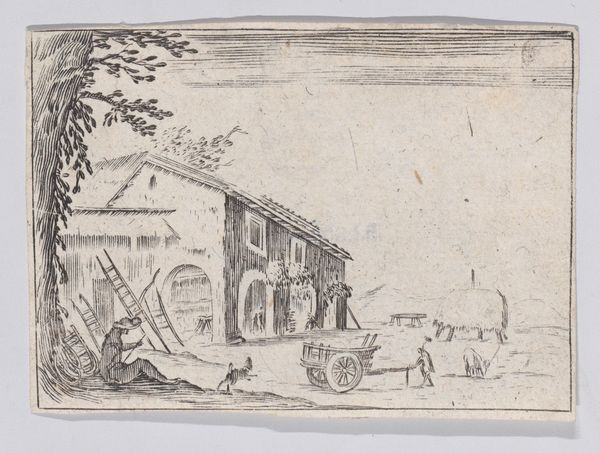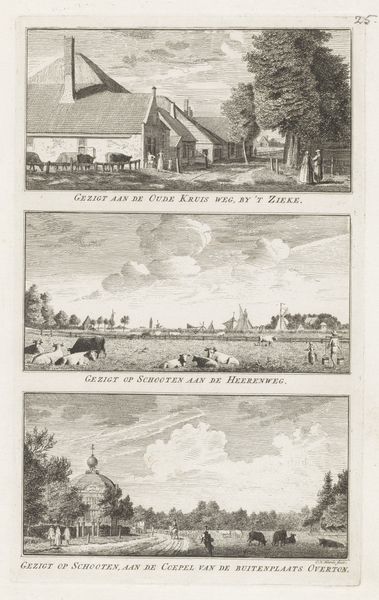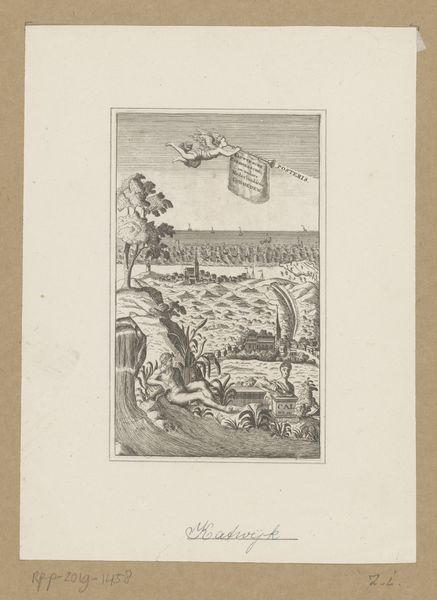
Suite de divers sujets de figure de Paysage et Ornements Chinois et François 1765 - 1775
0:00
0:00
drawing, print, etching
#
drawing
# print
#
pen sketch
#
etching
#
landscape
#
figuration
#
orientalism
#
rococo
Dimensions: Sheet (Trimmed): 12 in. × 8 1/16 in. (30.5 × 20.5 cm) Plate: 11 7/16 × 7 9/16 in. (29 × 19.3 cm)
Copyright: Public Domain
Curator: Looking at this print from around 1765 to 1775, “Suite de divers sujets de figure de Paysage et Ornements Chinois et François” by Jean Pillement, I am struck by its whimsical depiction of imagined cultural exchange. It presents these layered vignettes—like peering through different windows onto fantasy worlds. Editor: Immediately, I get a sense of airy lightness from it—a confection of Chinoiserie. It's delicate and feels almost like looking at sketches from a traveler's notebook, imbued with both curiosity and a touch of colonial fantasy. I mean, just look at the composition, almost as though a playful, creative energy propelled its creation. Curator: Pillement's prints were often reproduced, popularizing the Rococo interpretation of Chinese aesthetics. Those figures, for example, the way they're rendered hints at a superficial understanding, borrowing imagery without deep cultural resonance, yet it established an artistic trend nonetheless. It reflects a very specific European yearning. Editor: Yes, exactly, the symbolic vocabulary feels borrowed, not deeply understood, which makes the artistic trend itself such an interesting, even troubling cultural artifact. And yet, I still get caught up in the charm of the details. Take the parasols, for example –they’re both practical and undeniably theatrical, adding to that feeling of lightness we talked about before. It gives a stage play vibe, or opera set. Curator: And that interplay between natural elements, such as the blossoming branches and somewhat caricatured figures creates tension. It illustrates a perceived exoticism, where the symbolism is employed less for authentic representation and more for decorative allure. It speaks to the psychological allure of the “Orient” during this time. Editor: So it's like a beautiful mirage... an exploration of "elsewhere" built on a foundation of projection and selective interpretation. Perhaps in that illusion we can catch glimmers of how cultures can perceive—and misperceive—each other? This definitely adds layers of complexity, like an onion to peel back slowly... Curator: It definitely is! These delicate scenes represent an attempt to grapple with foreign concepts—and in turn reflect their contemporary mindset, and desires back at them, almost unintentionally revealing its hidden depths! Editor: And in revealing those, as unsettling as it could become, makes us question the same thing now, hundreds of years after the initial etching. Very powerful.
Comments
No comments
Be the first to comment and join the conversation on the ultimate creative platform.
